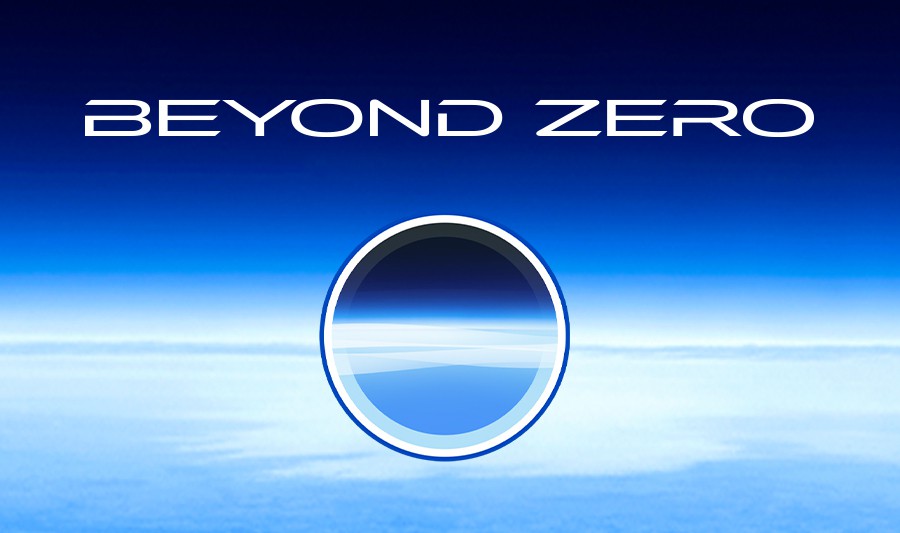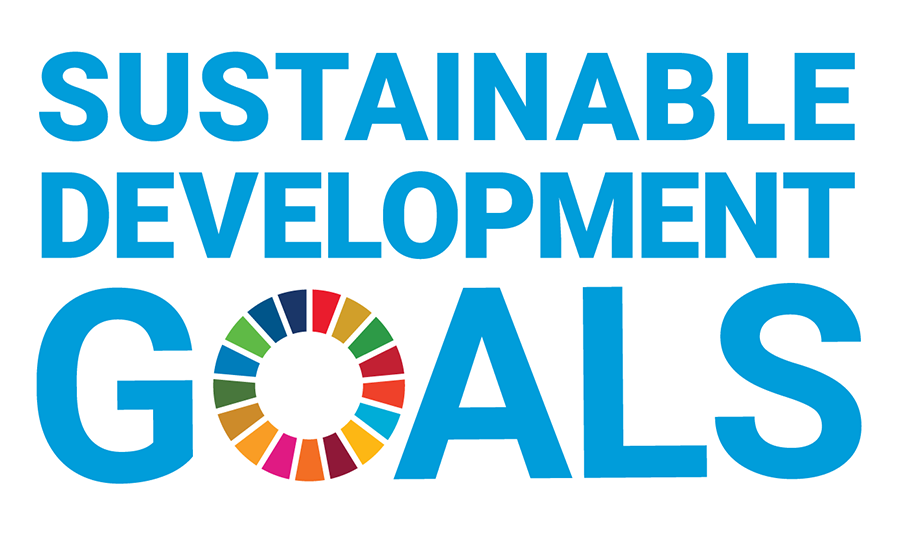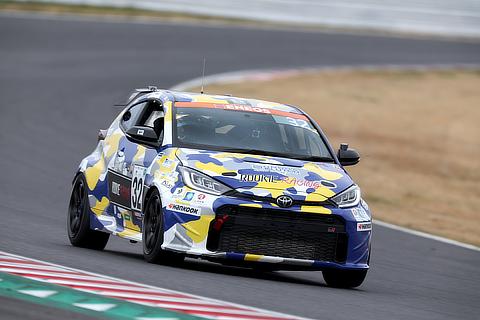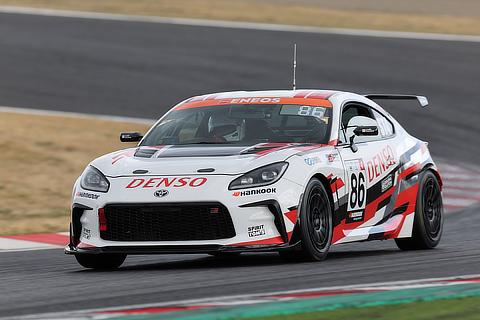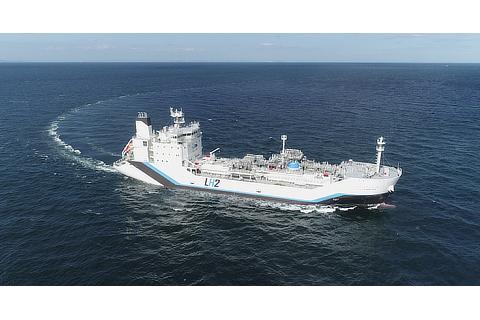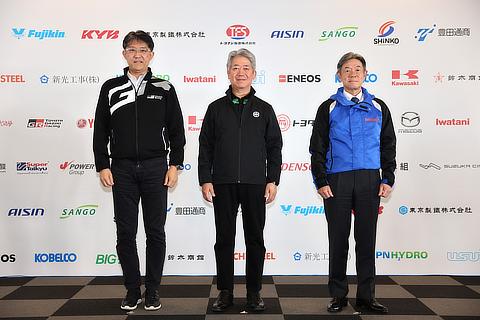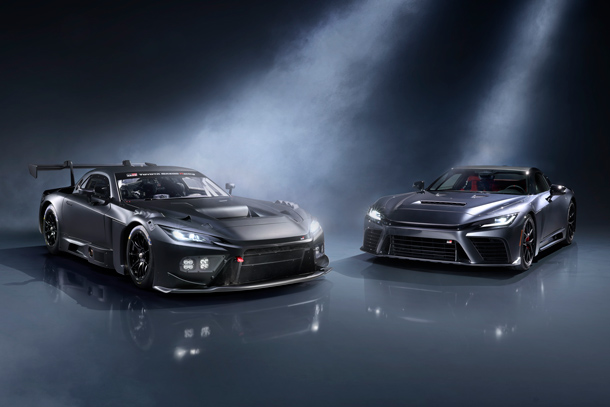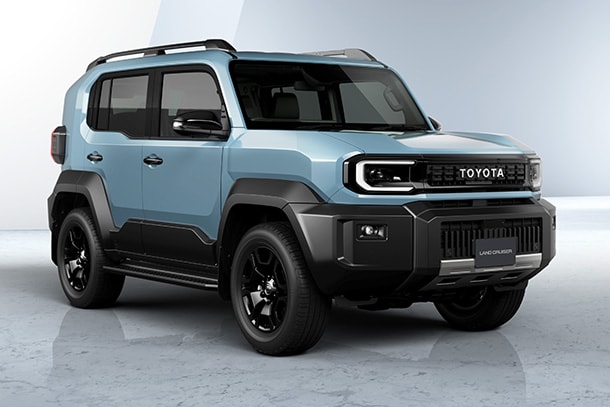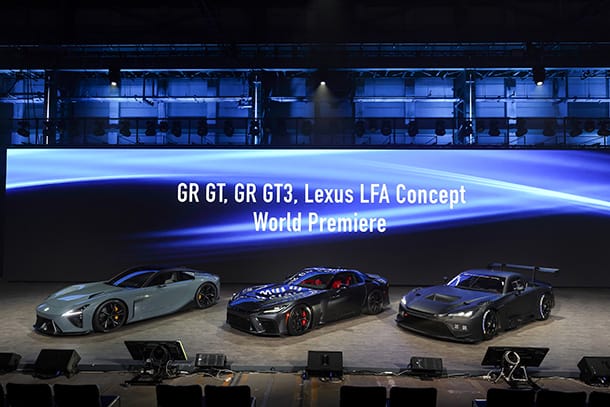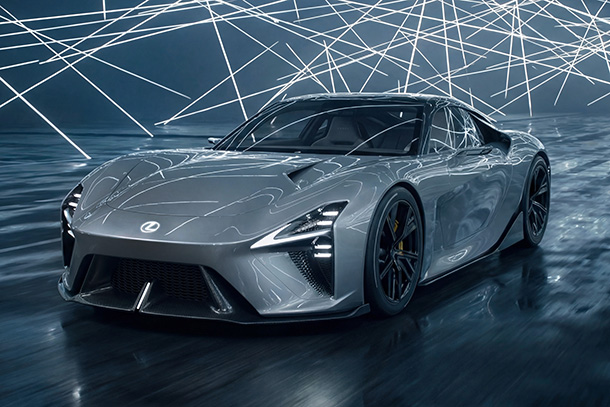Mar. 18, 2023
Liquid Hydrogen-Powered Corolla to be Absent from Round 1 of the Super Taikyu Series at Suzuka Development to Continue for Fuji 24 Hours RaceFurther Increase of Options for Carbon Neutrality
Toyota City, Japan, March 18, 2023―Toyota Motor Corporation (Toyota) will once again enter the ENEOS Super Taikyu Series 2023 Powered by Hankook with three vehicles.
Toyota has been racing the #32 ORC ROOKIE GR Corolla H2 Concept (hydrogen-powered Corolla) on gaseous hydrogen fuel for the past two years. The current aim is to use liquid hydrogen fuel this season.
Due to a problem encountered during a test run, the liquid hydrogen-powered Corolla will be absent from the first round at Suzuka on March 18 and 19. Development will be continued for the Fuji 24 Hours Race to be held May 26 to 28.
Toyota will continue taking on the challenge of increasing options for producing, transporting, and using hydrogen and carbon-neutral fuel this year. We will accelerate our efforts in the field of motorsports together with our partners in order to achieve carbon neutrality.
Super Taikyu Series 2023 Team Setup
| Vehicle | Hydrogen-powered Corolla*1 | GR86 (carbon-neutral fuel) | GR86 (gasoline) |
|---|---|---|---|
| Vehicle name | #32 ORC ROOKIE GR Corolla H2 Concept | #28 ORC ROOKIE GR86 CNF Concept | #86 TOM'S SPIRIT GR86 |
| Team | ROOKIE Racing | ROOKIE Racing | TOM'S SPIRIT |
| Class | ST-Q | ST-Q | ST-4 |
| *1 | Will not participate in Round 1 at Suzuka. Entry with "ORC ROOKIE GR Yaris" (gasoline). Notice Concerning Absence of Hydrogen-Powered Corolla from Super Taikyu Series Suzuka |
|---|
- Goals of the three vehicles entering the Super Taikyu Series 2023
- Hydrogen-powered Corolla
The hydrogen-powered Corolla has run on gaseous hydrogen since its first entry in the Super Taikyu Series in May 2021. Over the past two years, it has evolved with each race in areas such as output, torque, cruising range, and filling time.
Our goal by the end of this season is to enter races with a vehicle running on liquid hydrogen, which we have also been working to develop. As with gaseous hydrogen, we will refine our technology and people by taking on the challenge of continuously improving each item.
- GR86 (carbon-neutral fuel)
The GR86 (carbon-neutral fuel), which has competed in the Super Taikyu Series since 2022, will compete against Subaru Corporation's Team SDA Engineering BRZ CNF Concept, as well as Mazda Motor Corporation's MAZDA ROADSTER, which will newly enter the ST-Q class using carbon-neutral fuel from the summer. Through this competition, we will continue our efforts to increase fuel options together with our partners. We will also use the knowledge we gain through refinements in the strict environment of racing toward the development of production cars.
- GR86 (gasoline)
The GR86 (gasoline), which competes in the ST-4 class, is closer to a production car than the GR86 (carbon-neutral fuel). It will be refined through races, and we will apply these findings to develop production models and parts. We also hope to contribute to the overall excitement of the ST-4 class by sharing some of the knowledge we gain while engaging in a friendly rivalry with other teams.
Toyota will take on the challenges of increasing options to achieve carbon neutrality and making ever-better motorsports-bred cars by continuing to use this three-vehicle setup this year.
- New challenges of the hydrogen-powered Corolla
- Taking on the challenge of running on liquid hydrogen together with partners
In the Super Taikyu Series 2023, lignite hydrogen transported from Australia in February 2022 by the Suiso Frontier liquid hydrogen carrier built by Kawasaki Heavy Industries, Ltd. (KHI) as part of the HySTRA*2 project will be used for a portion of the fuel for the hydrogen-powered Corolla.
The mobile liquid hydrogen station that will be used at the circuit is being developed by Iwatani Corporation (Iwatani). By using liquid hydrogen as fuel, equipment that was previously necessary to produce compressed gaseous hydrogen such as compressors and pre-coolers for cooling hydrogen are no longer needed. As a result, the station can be four times smaller compared to stations for gaseous hydrogen, and fuel can be refilled in the pit area in the same way as gasoline-powered vehicles. In addition, since there is no longer the need to pressurize when filling, multiple vehicles can be filled in succession.
Nine new companies*3 have become partners in areas such as liquid hydrogen technology related to the hydrogen-powered Corolla, bringing the total number of companies involved in producing, transporting, and using hydrogen to 39.
-

- Suiso Frontier, KHI's liquid hydrogen carrier (Photograph courtesy of HySTRA)
- Vehicle Initiatives
The vehicle's fuel supply system will be changed to a liquid hydrogen system in conjunction with the change from gaseous to liquid hydrogen. However, the engine itself will be the same engine as when the vehicle was running on gaseous hydrogen.
Since the energy density per volume is increased by changing the fuel to liquid hydrogen, we will continue development for the Fuji 24-hour race with the goal of doubling the cruising range and the same filling time as before, about one-and-a-half-minute*4 period. We will strive to further improve engine performance, cruising range, and filling time throughout the year.
However, liquid hydrogen must be kept at temperatures lower than -253℃ during filling and storage. This poses unique challenges in areas such as developing fuel pump technology that can function in a low-temperature environment, preventing hydrogen from naturally evaporating from the tanks, and establishing regulations for vehicle-mounted hydrogen tanks. We will continue to work on overcoming these challenges with the cooperation of our partners in the areas of producing, transporting, and using hydrogen.
Both gaseous and liquid hydrogen have unique advantages and challenges, with gaseous hydrogen having the advantage of having a simpler system configuration. We will continue to focus on developing both gaseous and liquid hydrogen to increase fuel options and make the most of their unique characteristics.
| Advantages of Liquid Hydrogen | Challenges with Liquid Hydrogen |
|---|---|
| Increased energy density and cruising range | Must be kept at temperatures lower than -253℃ |
| Smaller hydrogen stations (can be filled in the pit) | Preventing hydrogen from evaporating due to heat in the tank |
| Doesn't need to be pressurized, allowing for multiple vehicles to be refilled in succession | Fuel pump technology that can function at -253℃ |
Toyota will continue to work with its partners to increase options based on its multi-pathway approach to meet the needs of customers around the world.
| *2 |
|
|---|---|
| *3 | New partners taking on the challenge of liquid hydrogen technologies for the hydrogen-powered Corolla |
| Partner Company | Role in Development |
|---|---|
| AISIN CORPORATION | Control valve |
| Aichi Steel Corporation | Metal materials |
| USUI CO., LTD. | Vacuum double piping |
| KYB Corporation | Carbon-neutral absorber oil |
| SANGO Co., Ltd. | Muffler |
| Shinko Plant Service Co., Ltd. | Carburetor |
| Shinko Industries Co., Ltd. | Vacuum-insulated liquid hydrogen tank |
| Suzuki Shokan Co., Ltd. | Carburetor |
| Fujikin Incorporated | Control valve |
| *4 | Time of hydrogen flow after attaching the hydrogen supply nozzle |
|---|
"Achieving zero, and adding new value beyond it"
As part of efforts to pass our beautiful "Home Planet" to the next generation, Toyota has identified and is helping to solve issues faced by individuals and overall society, which Toyota calls "Achieving Zero," hoping to help reduce the negative impacts caused by these issues to people and the environment to zero. Additionally, Toyota is also looking "Beyond Zero" to create and provide greater value by continuing to diligently seek ways to improve lives and society for the future.
- About Beyond Zero
- https://global.toyota/en/mobility/beyond-zero/
Toyota Motor Corporation works to develop and manufacture innovative, safe and high-quality products and services that create happiness by providing mobility for all. We believe that true achievement comes from supporting our customers, partners, employees, and the communities in which we operate. Since our founding over 80 years ago in 1937, we have applied our Guiding Principles in pursuit of a safer, greener and more inclusive society. Today, as we transform into a mobility company developing connected, automated, shared and electrified technologies, we also remain true to our Guiding Principles and many of the United Nations' Sustainable Development Goals to help realize an ever-better world, where everyone is free to move.
- SDGs Initiatives
- https://global.toyota/en/sustainability/sdgs/
